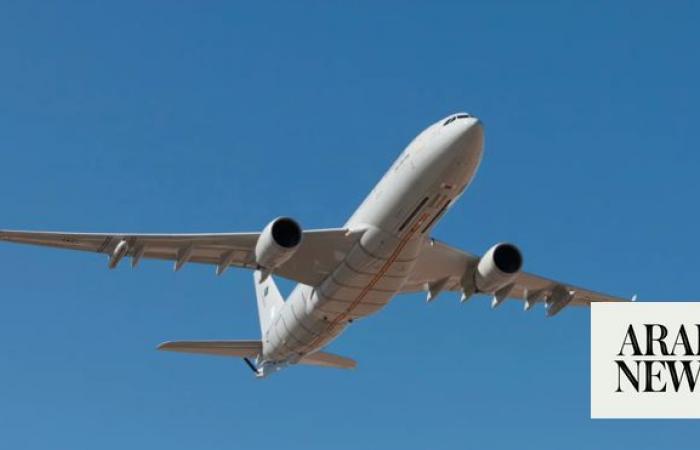Thank you for reading the news about Saudi Arabia to acquire 4 Airbus A330 MRTTs to boost air capabilities and now with the details
Jeddah - Yasmine El Tohamy - RIYADH: Remittances by expatriates living in Saudi Arabia saw an annual rise of 12 percent in May to SR12.6 billion ($3.4 billion), marking the highest level in nearly two years.
The latest bulletin from the Saudi Central Bank, also known as SAMA, further revealed that remittances sent abroad by the Kingdom’s nationals also increased by 6 percent during this period, totaling SR6.18 billion, the highest since November 2022.
This amount also marks a 25 percent increase compared to April.
The recovery of the post-pandemic job market, along with the Kingdom’s high salaries, successful government strategies to attract and retain expatriates, and low transfer costs, are pivotal factors driving this upward trend.
Improvements in financial technology and mobile banking solutions, which make sending money abroad easier and more convenient, are also seen as contributing to the increased remittance activities.
For Saudis, other factors include increased financial obligations such as debt repayments, educational fees, or healthcare costs for family members abroad.
Additionally, the Kingdom’s nationals involved in international commerce may boost remittance outflows for business-related expenses, investments, or partnerships.
Expatriate salaries in Saudi Arabia are among the highest in the Middle East, with an average executive earning over $100,000 per year, setting a global benchmark, according to expat.com, a portal providing information and advice to expats.
The Kingdom’s strategy to attract and retain foreign workers has shown success, evidenced by recent data from the Saudi General Organization for Social Insurance.
The number of non-Saudis covered by the Kingdom’s social insurance scheme has notably increased, reflecting the government’s successful efforts in this area.
Additionally, several multinational corporations have relocated their regional headquarters to Saudi Arabia, further boosting the country’s economic landscape.
Crown Prince Mohammed bin Salman aims to elevate Riyadh into one of the world’s top 10 economic hubs by 2030, as part of the broader Vision 2030 initiative to diversify the economy and enhance its global standing.
Global perspectives
According to the World Bank’s Migration and Development Brief released in June, remittance flows were influenced by both structural and cyclical factors in source and recipient countries in 2023.
Key factors included job markets for migrant workers in source countries, immigration policies, exchange rate movements of major currencies against the US dollar, the prevalence of multiple money conversion values in recipient countries, and war and conflict.
The recovery of job markets in high-income countries of the Organization for Economic Co-operation and Development, especially following the COVID-19 pandemic, significantly drove remittances, with employment growth being more rapid for immigrants than for native-born workers.
According to the World Bank, Saudi Arabia led in outward remittances as a percentage of gross domestic product last year.
In total volume, the US was the largest source of transfer globally, and is followed by the Kingdom and Switzerland. Additionally, the top transfer source countries include members of the Gulf Cooperation Council.
Furthermore, the report highlighted that Saudi Arabia, alongside South Korea, has the lowest transfer costs among G20 countries for remittances.
In the fourth quarter of 2023, while charges from these major global sources of remittances stayed relatively steady at 6.5 percent compared to the previous year, they remained above the global average.
Significant variance in rates exists among G20 nations, with South Africa being the most expensive at 12.8 percent, followed by Japan at 7 percent.
In the Middle East and North Africa region for 2023, Egypt received $19.5 billion in remittances, followed by Morocco with $11.8 billion and Lebanon with $6.7 billion.
Egypt has implemented initiatives to stimulate remittance market growth, including promoting digital channels for formal sector transfers, introducing savings products exempt from commissions for the Egyptian diaspora through banks, and announcing exchange rate liberalization by the Central Bank of Egypt in March.
In South Asia, India topped remittance receipts with $119.5 billion, followed by Pakistan with $26.6 billion and Bangladesh with $22.2 billion.
In addition to the UAE, Saudi Arabia, Kuwait, Oman, and Qatar collectively account for 11 percent of India’s total remittances.
These were the details of the news Saudi Arabia to acquire 4 Airbus A330 MRTTs to boost air capabilities for this day. We hope that we have succeeded by giving you the full details and information. To follow all our news, you can subscribe to the alerts system or to one of our different systems to provide you with all that is new.
It is also worth noting that the original news has been published and is available at Arab News and the editorial team at AlKhaleej Today has confirmed it and it has been modified, and it may have been completely transferred or quoted from it and you can read and follow this news from its main source.

